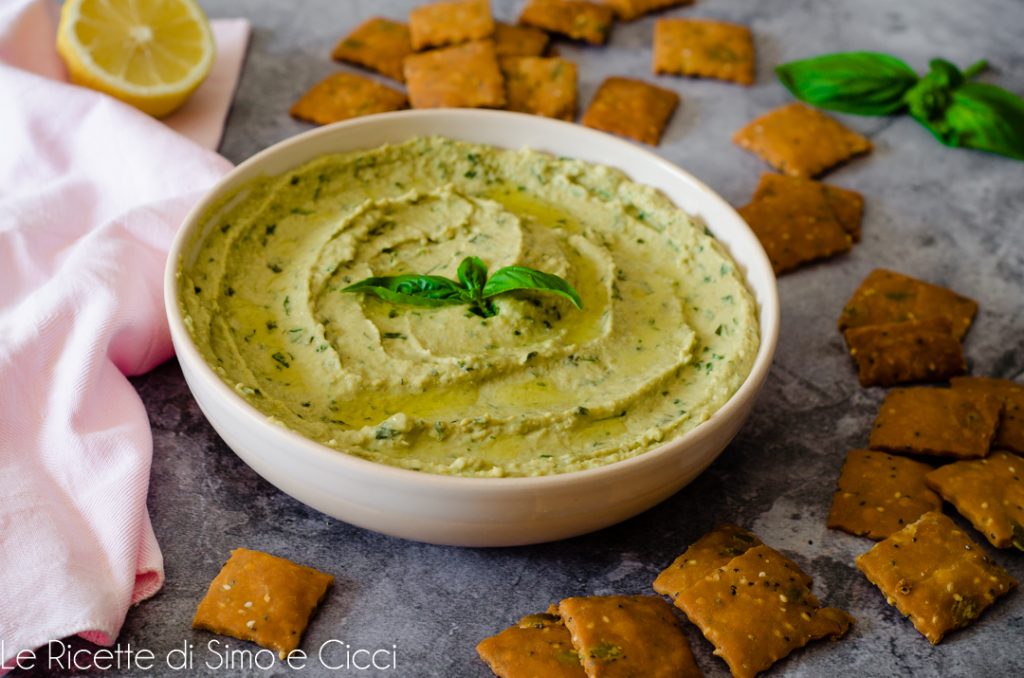
- Difficulty: Very Easy
- Cost: Very Cheap
- Preparation time: 5 Minutes
- Cooking methods: No Cooking
- Cuisine: Middle Eastern
- Seasonality: Spring, Summer, and Fall
- Energy 103.20 (Kcal)
- Carbohydrates 8.27 (g) of which sugars 0.59 (g)
- Proteins 3.34 (g)
- Fat 6.46 (g) of which saturated 0.79 (g)of which unsaturated 1.30 (g)
- Fibers 2.55 (g)
- Sodium 282.56 (mg)
Indicative values for a portion of 100 g processed in an automated way starting from the nutritional information available on the CREA* and FoodData Central** databases. It is not food and / or nutritional advice.
* CREATES Food and Nutrition Research Center: https://www.crea.gov.it/alimenti-e-nutrizione https://www.alimentinutrizione.it ** U.S. Department of Agriculture, Agricultural Research Service. FoodData Central, 2019. https://fdc.nal.usda.gov
Simo and Cicci Recommend
Store the basil hummus in an airtight container in the fridge for up to 5 days. You can also freeze it for up to 3 months. Let it thaw in the fridge and blend it again to reach the right consistency.
If you have difficulty finding tahini, you can make it at home with our recipe using sesame seeds.
To prevent the basil from darkening due to oxidation, you can blanch the basil leaves for 5 seconds and immediately transfer them to a bowl of cold water. Drain them, dry them, and you’ll see that they retain their bright green color.
To prevent the basil from darkening due to oxidation, you can blanch the basil leaves for 5 seconds and immediately transfer them to a bowl of cold water. Drain them, dry them, and you’ll see that they retain their bright green color.

